
Downtown Santa Barbara: The Heart of Coastal Charm
Discover Downtown Santa Barbara: A charming blend of historic architecture, vibrant culture, and scenic coastal beauty in the heart of California's Central Coast.
Downtown Santa Barbara is a vibrant blend of historic charm and modern amenities, nestled between the scenic Santa Ynez Mountains and the Pacific Ocean. This picturesque area is known for its Spanish colonial architecture, tree-lined streets, and a bustling cultural scene. Whether you're a history buff, a foodie, or a shopaholic, Downtown Santa Barbara offers a delightful experience for every type of traveler. State Street, the main thoroughfare, is a pedestrian-friendly paradise filled with an eclectic mix of boutiques, art galleries, and restaurants. You can spend hours exploring unique shops, sampling local wines at the many tasting rooms, or indulging in gourmet meals at award-winning eateries. The vibrant farmer's market, held twice a week, is a must-visit for fresh produce and artisanal goods. Cultural enthusiasts will appreciate the rich history and artistic flair of the area. The Santa Barbara Museum of Art and the Granada Theatre offer world-class exhibits and performances. For a touch of history, take a stroll to the historic Santa Barbara Courthouse, where you can admire its stunning architecture and panoramic views from the clock tower. Outdoor lovers will find plenty to do as well. The neighborhood is just a short walk from the beautiful waterfront, where you can enjoy sandy beaches, waterfront dining, and the iconic Stearns Wharf. Rent a bike or take a leisurely walk along the beachside paths to soak in the stunning coastal views.
Local tips in Downtown Santa Barbara
- Visit State Street early in the morning to avoid crowds and enjoy a peaceful shopping experience.
- Don't miss the panoramic views from the Santa Barbara Courthouse clock tower—it's free and offers the best vantage point in the city.
- Check out the local events calendar, as Downtown Santa Barbara frequently hosts festivals, parades, and outdoor concerts.
- Parking can be challenging; consider using public transportation or ride-sharing services to get around.
- Wear comfortable shoes; the best way to explore Downtown Santa Barbara is on foot.
Downtown Santa Barbara: The Heart of Coastal Charm
Downtown Santa Barbara is a vibrant blend of historic charm and modern amenities, nestled between the scenic Santa Ynez Mountains and the Pacific Ocean. This picturesque area is known for its Spanish colonial architecture, tree-lined streets, and a bustling cultural scene. Whether you're a history buff, a foodie, or a shopaholic, Downtown Santa Barbara offers a delightful experience for every type of traveler. State Street, the main thoroughfare, is a pedestrian-friendly paradise filled with an eclectic mix of boutiques, art galleries, and restaurants. You can spend hours exploring unique shops, sampling local wines at the many tasting rooms, or indulging in gourmet meals at award-winning eateries. The vibrant farmer's market, held twice a week, is a must-visit for fresh produce and artisanal goods. Cultural enthusiasts will appreciate the rich history and artistic flair of the area. The Santa Barbara Museum of Art and the Granada Theatre offer world-class exhibits and performances. For a touch of history, take a stroll to the historic Santa Barbara Courthouse, where you can admire its stunning architecture and panoramic views from the clock tower. Outdoor lovers will find plenty to do as well. The neighborhood is just a short walk from the beautiful waterfront, where you can enjoy sandy beaches, waterfront dining, and the iconic Stearns Wharf. Rent a bike or take a leisurely walk along the beachside paths to soak in the stunning coastal views.
Iconic landmarks you can’t miss
El Presidio de Santa Bárbara State Historic Park
Experience the rich history and stunning beauty of El Presidio de Santa Bárbara, a unique state park showcasing California's colonial heritage.

Santa Barbara Historical Museum
Uncover the captivating history and cultural richness of Santa Barbara at the Santa Barbara Historical Museum, a must-visit destination for all travelers.

Casa de la Guerra
Explore the rich history of California at Casa de la Guerra, a historical museum showcasing the fascinating life of early settlers in Santa Barbara.

Hill Carrillo Adobe
Experience the rich history of the Hill Carrillo Adobe in Santa Barbara, a charming glimpse into California's past since 1826.
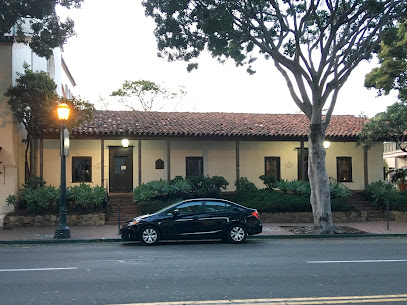
Residential building
Discover the architectural beauty of a unique residential building in Santa Barbara, a perfect blend of culture and charm.

Casa Covarrubias
Explore Casa Covarrubias, a historic landmark in Santa Barbara, showcasing remarkable architecture and rich cultural heritage.

Rafael González House
Discover the captivating history and architecture of the Rafael González House in Santa Barbara, a must-visit historical landmark for cultural enthusiasts.

Paseo de la Guerra
Experience the rich history and stunning architecture of Paseo de la Guerra in Santa Barbara, a captivating landmark that embodies the city's cultural heritage.

The Orena Adobe
Discover the charm of The Orena Adobe, a historical landmark in Santa Barbara that embodies California's rich cultural heritage and architectural beauty.

Unmissable attractions to see
Pier Santa Barbara
Discover the enchanting Pier Santa Barbara, where breathtaking ocean views, unique shops, and delightful dining experiences await every visitor.

Santa Barbara County Courthouse Gardens
Explore the lush landscapes and historical charm of Santa Barbara County Courthouse Gardens, a true gem of California's architectural heritage.

Santa Barbara Museum of Natural History Sea Center
Discover marine life at Santa Barbara Museum of Natural History Sea Center, an engaging aquarium and educational destination on the stunning waterfront.

Santa Barbara Museum Of Art
Explore the Santa Barbara Museum of Art, a cultural oasis featuring diverse collections and dynamic exhibitions in the heart of California's scenic coast.

El Presidio de Santa Bárbara State Historic Park
Explore California's rich history at El Presidio de Santa Bárbara State Historic Park, a blend of stunning architecture, lush gardens, and captivating stories.

Santa Barbara Historical Museum
Immerse yourself in the rich history and culture of Santa Barbara at the Santa Barbara Historical Museum, where the past and present beautifully intertwine.

Santa Barbara Carriage and Western Art Museum
Explore the Santa Barbara Carriage and Western Art Museum: A unique cultural gem showcasing horse-drawn carriages and Western art in a charming coastal setting.

Casa de la Guerra
Discover the historical charm of Casa de la Guerra, a unique museum experience in Santa Barbara that showcases California's rich and vibrant heritage.

Susan Quinlan Doll & Teddy Bear Museum & Library
Discover the charm of dolls and teddy bears at Santa Barbara's enchanting Susan Quinlan Doll & Teddy Bear Museum & Library, a treasure trove for collectors and families alike.

Santa Barbara Fox
Experience the magical allure of Santa Barbara Fox, a historic venue showcasing culture through performances in the heart of Santa Barbara.

Essential places to dine
Brophy Bros.
Experience fresh seafood delights with stunning harbor views at Brophy Bros., a must-visit restaurant in Santa Barbara.

Santa Barbara Shellfish Company
Discover fresh seafood delights at Santa Barbara Shellfish Company on Stearns Wharf – where ocean views meet culinary excellence.

Loquita Santa Barbara
Experience authentic Spanish cuisine at Loquita Santa Barbara with delicious tapas and exquisite wines in a vibrant setting.

The Lark Santa Barbara
Experience the vibrant flavors of New American cuisine at The Lark Santa Barbara – where every meal is a celebration of local ingredients.

bouchon Santa Barbara
Experience exquisite French cuisine at Bouchon Santa Barbara, where local ingredients meet culinary artistry in an elegant setting.
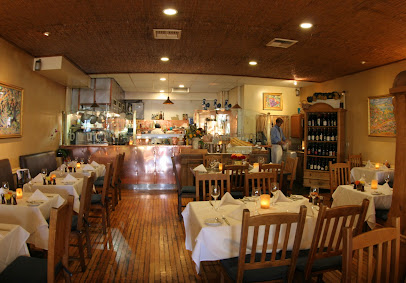
Finch & Fork
Experience vibrant New American cuisine at Finch & Fork in Santa Barbara - where local flavors meet stylish dining.
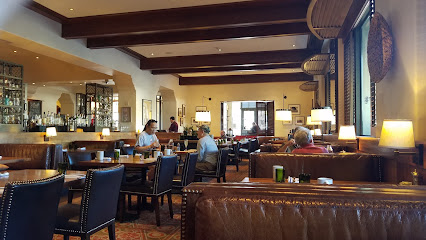
Barbareño
Experience exquisite American cuisine at Barbareño in Santa Barbara—where tradition meets innovation for an unforgettable dining adventure.

Jane
Discover exquisite Californian cuisine at Jane in Santa Barbara - where fresh ingredients meet innovative flavors for an unforgettable dining experience.
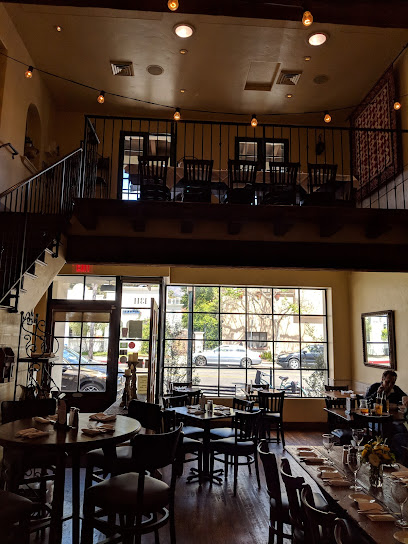
Petit Valentien
Experience the taste of France at Petit Valentien - Santa Barbara's premier destination for exquisite French cuisine and fine dining.

Markets, malls and hidden boutiques
Paseo Nuevo
Discover the charm of Paseo Nuevo, Santa Barbara's premier shopping destination with unique stores, delightful dining, and vibrant community events.

Marshalls
Experience unbeatable deals on fashion and essentials at Marshalls Santa Barbara, where every visit is a treasure hunt for unique finds.

Paradise Found
Explore the charm of Paradise Found, Santa Barbara's premier gift shop and bookstore, filled with unique treasures and local artistry.

Only In Santa Barbara
Shop unique gifts and souvenirs that capture the essence of Santa Barbara at Only In Santa Barbara, a must-visit destination for travelers.

Lewis & Clark
Explore Lewis & Clark in Santa Barbara for unique gifts and local artisan treasures that embody California's coastal charm.

Santa Barbara Museum of Art Store
Explore unique gifts and art-inspired treasures at the Santa Barbara Museum of Art Store, a hub of creativity in California's coastal paradise.

Stabiles Boutique
Explore Stabiles Boutique in Santa Barbara for unique gifts, stylish fashion, and art supplies in a charming boutique atmosphere.
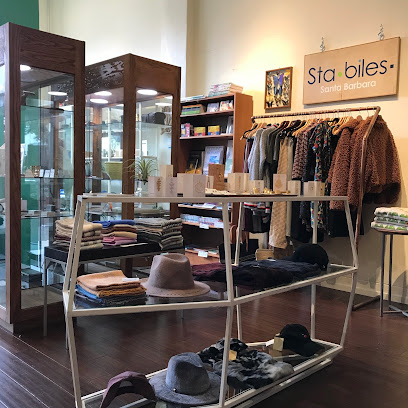
The Yes Store
Discover unique handcrafted gifts and support local artists at The Yes Store in Santa Barbara, a vibrant hub of creativity and culture.
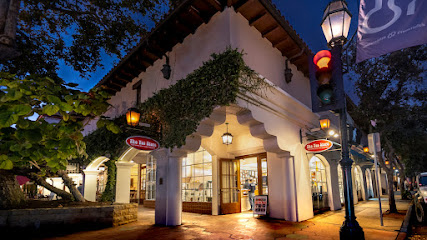
Lovebird Boutique & Jewelry Bar
Explore the unique charm of Lovebird Boutique & Jewelry Bar in Santa Barbara, where fashion meets elegance with a curated selection of clothing and jewelry.

Folly
Explore Folly Gift Shop in Santa Barbara for unique, locally crafted treasures and gifts that capture the essence of California's vibrant culture.

Essential bars & hidden hideouts
Dargan's
Experience authentic Irish hospitality at Dargan's, a lively pub in Santa Barbara offering delicious cuisine and live entertainment.

milk & honey
Experience the vibrant flavors of Spain at Milk & Honey, Santa Barbara’s premier tapas bar and bar, perfect for food and drink enthusiasts alike.

The Good Lion
Experience the vibrant atmosphere and innovative cocktails at The Good Lion, Santa Barbara's top cocktail bar, perfect for nightlife enthusiasts.

Elsies Tavern
Experience the lively atmosphere at Elsies Tavern, Santa Barbara's go-to pub for drinks, food, and friendly gatherings in a vibrant setting.

O'Malleys Bar
Experience the vibrant nightlife at O'Malleys Bar, a cocktail oasis in Santa Barbara, offering creative drinks and a lively atmosphere.

Press Room
Experience the vibrant nightlife of Santa Barbara at The Press Room, a cozy bar known for its unique cocktails and friendly atmosphere.

The Pickle Room
Experience the vibrant cocktail culture at The Pickle Room, a top-rated bar in Santa Barbara, blending innovative drinks with a cozy grill atmosphere.

Mel's Lounge
Experience the vibrant atmosphere and affordable drinks at Mel's Lounge, a popular dive bar in Santa Barbara, CA.

Sportsman Lounge
Experience the vibrant atmosphere and friendly vibes at Sportsman Lounge, a top bar destination in the heart of Santa Barbara.

Odessa Lounge
Discover a serene wine haven at Odessa Lounge in Santa Barbara, where exquisite wines and a cozy atmosphere create unforgettable moments.

Local Phrases
-
- HelloHola
[oh-lah] - GoodbyeAdiós
[ah-dee-ohs] - YesSí
[see] - NoNo
[noh] - Please/You're welcomePor favor/De nada
[por fah-bor/de nah-dah] - Thank youGracias
[grah-see-ahs] - Excuse me/SorryPerdón/Lo siento
[pair-dohn/loh see-en-toh] - How are you?¿Cómo estás?
[koh-moh es-tahs] - Fine. And you?Bien. ¿Y tú?
[bee-en. ee too] - Do you speak English?¿Hablas inglés?
[ah-blahs een-glays] - I don't understandNo entiendo
[noh en-tee-en-doh]
- HelloHola
-
- I'd like to see the menu, pleaseMe gustaría ver el menú, por favor
[may goo-stah-ree-ah ver el meh-noo, por fah-bor] - I don't eat meatNo como carne
[noh koh-moh kahr-neh] - Cheers!¡Salud!
[sah-lood] - I would like to pay, pleaseMe gustaría pagar, por favor
[may goo-stah-ree-ah pah-gar, por fah-bor]
- I'd like to see the menu, pleaseMe gustaría ver el menú, por favor
-
- Help!¡Ayuda!
[ah-yoo-dah] - Go away!¡Vete!
[veh-teh] - Call the Police!¡Llama a la policía!
[yah-mah ah lah poh-lee-see-ah] - Call a doctor!¡Llama a un doctor!
[yah-mah ah oon dohk-tohr] - I'm lostEstoy perdido
[es-toy pair-dee-doh] - I'm illEstoy enfermo
[es-toy en-fehr-moh]
- Help!¡Ayuda!
-
- I'd like to buy...Me gustaría comprar...
[may goo-stah-ree-ah kohm-prahr...] - I'm just lookingSolo estoy mirando
[soh-loh es-toy mee-rahn-doh] - How much is it?¿Cuánto cuesta?
[kwan-toh kwehs-tah] - That's too expensiveEso es demasiado caro
[eh-soh es deh-mah-see-ah-doh kah-roh] - Can you lower the price?¿Puede bajar el precio?
[pweh-deh bah-har el pree-syoh]
- I'd like to buy...Me gustaría comprar...
-
- What time is it?¿Qué hora es?
[kay oh-rah es] - It's one o'clockEs la una
[es lah oo-nah] - Half past (10)Las diez y media
[lahs dee-ehs ee meh-dee-ah] - MorningMañana
[mah-nyah-nah] - AfternoonTarde
[tahr-deh] - EveningNoche
[noh-cheh] - YesterdayAyer
[ah-yehr] - TodayHoy
[oy] - TomorrowMañana
[mah-nyah-nah] - 1Uno
[oo-noh] - 2Dos
[dohs] - 3Tres
[trehs] - 4Cuatro
[kwah-troh] - 5Cinco
[seen-koh] - 6Seis
[says] - 7Siete
[syeh-teh] - 8Ocho
[oh-choh] - 9Nueve
[nweh-veh] - 10Diez
[dee-ehs]
- What time is it?¿Qué hora es?
-
- Where's a/the...?¿Dónde está un/el...?
[dohn-deh es-tah oon/el] - What's the address?¿Cuál es la dirección?
[kwal es lah dee-rek-syon] - Can you show me (on the map)?¿Puedes mostrarme (en el mapa)?
[pweh-dehs mohs-trahr-meh (en el mah-pah)] - When's the next (bus)?¿Cuándo pasa el próximo (autobús)?
[kwan-doh pah-sah el proh-ksee-moh (ow-toh-booce)] - A ticket (to ....)Un boleto (a ....)
[oon boh-leh-toh (ah ....)]
- Where's a/the...?¿Dónde está un/el...?
History of Downtown Santa Barbara
-
Long before European contact, the Chumash people inhabited the area that is now Downtown Santa Barbara. Their rich culture thrived along the coast, utilizing the abundant marine resources and developing sophisticated trade networks. The Chumash were known for their impressive plank canoes, called 'tomols,' which facilitated trade and fishing.
-
In 1782, Santa Barbara was established as a Spanish mission under the leadership of Father Junípero Serra. The Mission Santa Barbara is often referred to as the 'Queen of the Missions' and played a vital role in the spread of Christianity among the Chumash. The mission's architecture, characterized by its distinct Spanish colonial style, continues to influence the aesthetic of Downtown Santa Barbara.
-
Santa Barbara was officially incorporated as a city in 1850, shortly after California became a state. The town grew rapidly during the 19th century, serving as a hub for agriculture and trade. The establishment of a railroad in the 1880s further propelled its development, connecting Santa Barbara to larger markets and facilitating tourism.
-
A significant event in the history of Downtown Santa Barbara was the devastating earthquake of 1925, which caused widespread destruction. In response, a rebuilding effort took place that embraced the Mediterranean Revival architectural style, which can be seen throughout the downtown area today. This event not only shaped the physical landscape but also encouraged a sense of community and resilience among residents.
-
By the mid-20th century, Downtown Santa Barbara began to experience a cultural renaissance. The area became known for its art galleries, theaters, and cultural events. Efforts were made to preserve its historical buildings, leading to the establishment of the Santa Barbara Historic Landmarks Commission in 1965. This commitment to preservation has helped maintain the city's unique character and charm.
Downtown Santa Barbara Essentials
-
Downtown Santa Barbara is easily accessible from other neighborhoods in Santa Barbara. If you are coming from the airport, the Santa Barbara Airport (SBA) is about 8 miles away, and you can take a taxi, rideshare service, or the Airport Shuttle Service, which directly connects to downtown. If you are traveling from nearby areas like Goleta or Montecito, the MTD (Metropolitan Transit District) buses offer regular routes to downtown. For those coming from Los Angeles, the Amtrak Pacific Surfliner train provides a scenic coastal route to Santa Barbara's train station, which is conveniently located near downtown.
-
Downtown Santa Barbara is pedestrian-friendly, with most attractions within walking distance. The MTD buses run frequently throughout the city, making it easy to reach other neighborhoods. Biking is also popular, with bike rental shops available, and the beachfront bike path offers a scenic ride along the coast. If you prefer more flexibility, consider renting a car or using rideshare services like Uber and Lyft to navigate the area.
-
Downtown Santa Barbara is generally safe for tourists; however, standard precautions are advised. Areas such as the Eastside and parts of the Westside have higher crime rates, particularly for petty theft and vandalism. It's essential to remain vigilant, especially at night and in less populated areas. Avoid displaying valuables and keep an eye on your belongings in crowded places.
-
In case of an emergency, dial 911 for police, fire, or medical assistance. Santa Barbara has several hospitals and urgent care centers for medical emergencies. It is advisable to have travel insurance that covers medical issues. For non-emergency situations, the local police department is located downtown, and pharmacies are available for over-the-counter needs.
-
Fashion: Do wear comfortable clothing suitable for the beach and casual dining; don't wear overly formal attire. Religion: Do respect local customs, especially when visiting historical sites like Mission Santa Barbara; don't disrupt services or take photos where prohibited. Public Transport: Do be courteous on buses and give up your seat to those in need; don’t eat or drink on public transport. Greetings: Do greet locals with a friendly smile or nod; don’t be overly loud or intrusive. Eating & Drinking: Do try local wines and fresh seafood; don’t leave a restaurant without tipping, as it's customary.
-
To experience Downtown Santa Barbara like a local, visit the local farmer's market held every Tuesday and Saturday, where you can find fresh produce and artisanal goods. Explore State Street, known for its boutiques and restaurants, and don’t miss the Funk Zone, an artsy district filled with galleries, wine tasting rooms, and vibrant street art. Engage with locals by visiting community events or festivals, and make sure to check out the historic Santa Barbara Courthouse for its stunning architecture and panoramic views from the clock tower.
Nearby Cities to Downtown Santa Barbara
-
Things To Do in Oxnard
-
Things To Do in Malibu
-
Things To Do in Santa Clarita
-
Things To Do in Pismo Beach
-
Things To Do in Santa Monica
-
Things To Do in Venice Beach
-
Things To Do in Bakersfield
-
Things To Do in Burbank
-
Things To Do in Hollywood
-
Things To Do in Inglewood
-
Things To Do in Glendale
-
Things To Do in Los Angeles
-
Things To Do in Pasadena
-
Things To Do in Monterey Park
-
Things To Do in Long Beach













